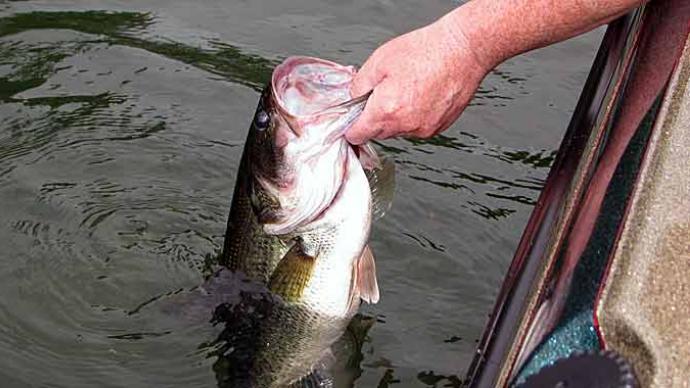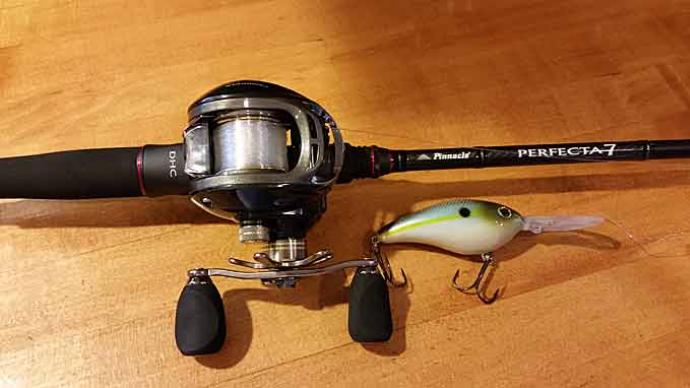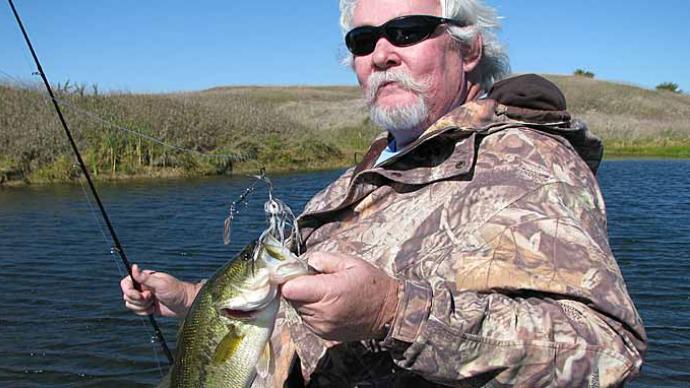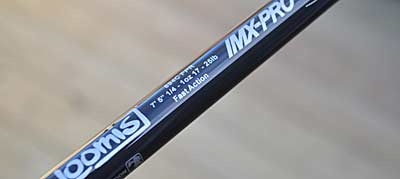
A simple trip to the store is pockmarked with decisions. It doesn’t matter if you’re purchasing a vehicle, phone, or morning coffee, there are plenty of choices or customizations waiting. It’s no different when you step or surf into your favorite tackle shop. Pegs or webpages of soft-plastic lures blur into more containing hard baits. It can be daunting for rookie and experienced bass anglers alike, especially when searching for a casting rod-and-reel outfit.
Rod and reel manufacturers fill their catalogs with models. Each is equipped differently, from a reel’s gear ratio to a rod’s length. Combine specific characteristics, and you’ll create the perfect outfit for a particular situation, lure or technique. If you have the desire and are in the position to outfit yourself in that fashion, then have at it. But if you’re starting in the sport or your budget or available space is limited — you can only cram so many outfits into a rod locker or storage — and you need a few outfits that do more, then these three middle-of-the-road workhorses are for you. And in reality, they’re outfits that every bass angler should own.
Defining these casting outfits requires a change in perspective. The easiest way is to arrange lures and techniques with similar demands into groups—crankbaits, jerkbaits, and topwaters, all sport treble hooks. How and where they are fished is similar, so one outfit can handle them all. No question going this route may cost you a smidge of performance with individual lures and techniques. But getting more use out of each outfit makes up for it.
-
Multipurpose
In short order, this outfit will more than likely become your favorite, the one you turn to day in and day out. Commonly called a multipurpose outfit, it shines with spinnerbaits, vibrating jigs, and Carolina- and Texas-rigged soft plastics. But it’ll sling crankbaits, frogs, and jigs with ease if needed.
Image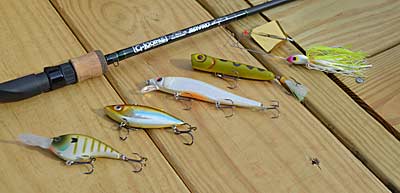
Getting more use from fewer casting outfits requires viewing each in terms of lure groups instead of individual baits or techniques. Crankbait outfits, for example, can do much more than present diving lures. They also easily handle jerkbaits, lipless crankbaits, topwaters, and buzzbaits. Photo by Pete M. Anderson Finding the proper mix of power and action is the trick to getting the most out of this or any rod. Power is how much a rod can move. Heavy power, for example, easily handles heavy lures, and light power handles small ones. It doesn’t describe how the rod’s blank flexes along its length. That’s action. A slow-action rod, for example, bends from tip to handle. On the other hand, a fast-action rod only flexes at its tip. Both action and power are available in varying degrees and any combination.
An excellent multipurpose rod measures 7 feet long, take or give an inch or two, depending on its maker. It will handle lures from about 1/4 to 3/4 ounce and lines as heavy as 17- or 20-pound test. It has a fast action, creating the accurate casts and snappy hook sets needed for single-hook lures. Search out one with a medium-heavy or heavy power, which supports a variety of lures.
A multipurpose rod needs a reel that can handle a lot, too. So, look for one with a mid-range gear ratio, between 6:1 and 7:1. That makes it easy to change your retrieve, whether speeding up or slowing down, to meet the wants of the bass and needs of the lure that you’re fishing at the moment.
As with any casting reel purchase, consider traits beyond gear ratio. Reels with more ball bearings, for example, operate smoother and last longer than those with fewer. And metal frames bring strength and durability. Both require a slightly larger upfront investment but will pay off in the long run.
Line choice should be determined by where you’re fishing. Deep and clear water, for example, demands small-diameter lines. Braided line is a good choice, but modern monofilament provides the most versatility. It’s strong, easy to cast, and challenging for bass to see underwater. While fluorocarbon line’s abrasion resistance, sensitivity, and invisibility make it fit the bill, too, it falls short with one lure category — topwaters — because it sinks. Monofilament floats.
-
Crankbait
While most anglers only use crankbait rods to sling their namesake lure, they can do much more. And once you’ve experienced that versatility, you’ll never want to be without one.
Most crankbait rods are between 7 and 8 feet long. They come in a variety of powers but only slow or moderate actions. That flex — from handle to tip — accomplishes a couple of things. First, it acts as a shock absorber, keeping your line tight as a hooked bass lunges and jumps. That’s vital for staying hooked when fishing a lure outfitted with treble hooks, which spread your effort across as many as nine points, diluting their ability to penetrate in the process. Any bit of slack line can allow your lure to dislodge.
Image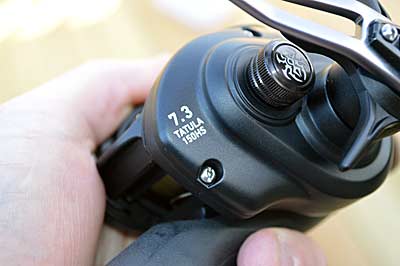
A reel with a mid-range gear ratio of between 6:1 and 7:1 can handle a variety of lures and techniques. Consider other traits, such as frame material and number of ball bearings, when selecting one. Photo by Pete M. Anderson A crankbait rod’s slow action also aids in casting lightweight and wind-resistant lures. It also handles lipless crankbaits with ease. It’s the same with jerkbaits, which attract lazy strikes in cold water. The slower action keeps those bass hooked, too, a promise that faster action multipurpose rods can’t make.
Crankbait outfits with a medium-heavy or heavy power are perfect for fishing buzzbaits, even around heavy cover. Their slow action makes casting easy and provides a built-in delay, which is key to more hookups. Set at the splash with a fast-action rod, for example, and you likely will pull your buzzbait away from the bass. Set at the splash with a crankbait rod, and the bass will likely have your lure by the time the rod loads and starts moving line.
The same casting reel used to complete your multipurpose outfit works well here, too. If you want to tweak your selection, find one that offers slightly more line capacity. That’ll help when you put it to use grinding deep-diving crankbaits offshore, where long casts are beneficial. If you go in that direction, keep your spool full of line. Less line shrinks its overall diameter, slowing retrieve speed.
Fluorocarbon is the best choice for line on a cranking rod, even if you’re planning to press it into buzzbait action. Unlike other topwaters, buzzbaits don’t require the line to lay on the surface.
-
Flip-pitch
Casting rods do plenty of heavy lifting, whether related to the lure, line or cover you’re fishing. They are targeting heavy cover, whether aquatic vegetation, tules, or timber and brush, is the rule rather than the exception in bass fishing. It always holds bass, regardless of current conditions or season. But going toe to fin in it requires one type of outfit. And while handling a variety of lures and techniques was the hallmark of the other must-have outfits, the frequency that you’ll be fishing heavy cover supports the need for a specialized flipping and pitching rod.
Rods designed for fixed-line flipping and underhand pitching are usually between 7 and a half and 8 feet long. All have a heavy or extra heavy power, which helps extract bass from the cover. But most sport an extra-fast action. It requires a lot of force to load during a flip or pitch, leading to errant flips, pitches, and big splashes when your lure hits the water.
So, select a flipping and pitching rod that has a fast action. Your lure, whether a jig or Texas-rigged soft plastic, will easily load that bit of flex, significantly improving your accuracy. Don’t dismiss a rod that has that combination of action and power but doesn’t carry a flipping and pitching label. It’ll still make a great flipping and pitching rod.
The rod’s tip flex also will help you take advantage of braided line, whose abrasion resistance is vital in heavy cover, by cushioning hook sets. An extra-fast action rod, for example, will rip hooks from bass because braided line has zero stretch.
When flipping, a reel’s retrieve speed is moot because you’re using a short piece of fixed-line. But it is essential when pitching. When you make a lengthy presentation to a dock, and there’s no bite, for example, the faster you can retrieve your lure, the sooner you can send it to the next target. And the more presentations you make, the more bass you’ll catch.


